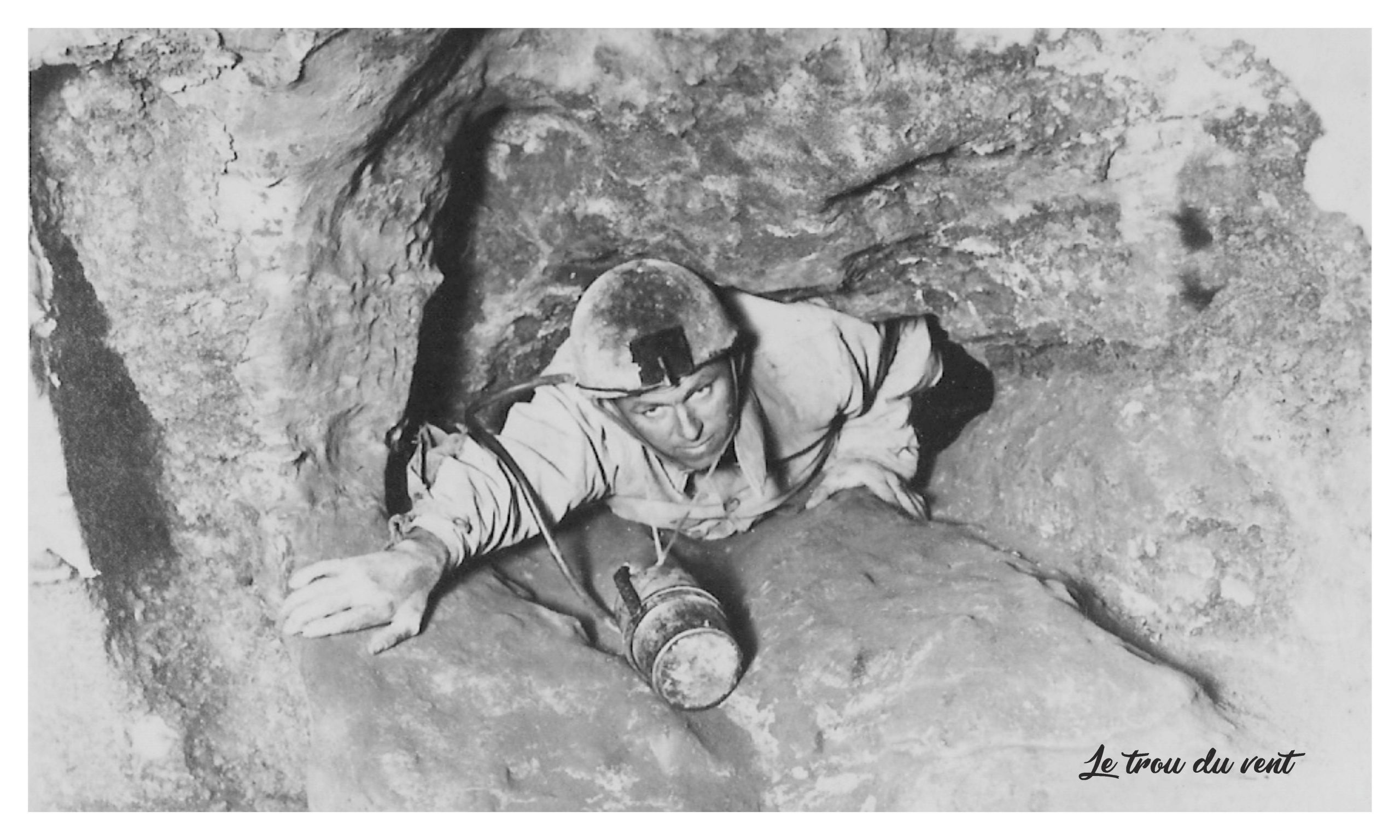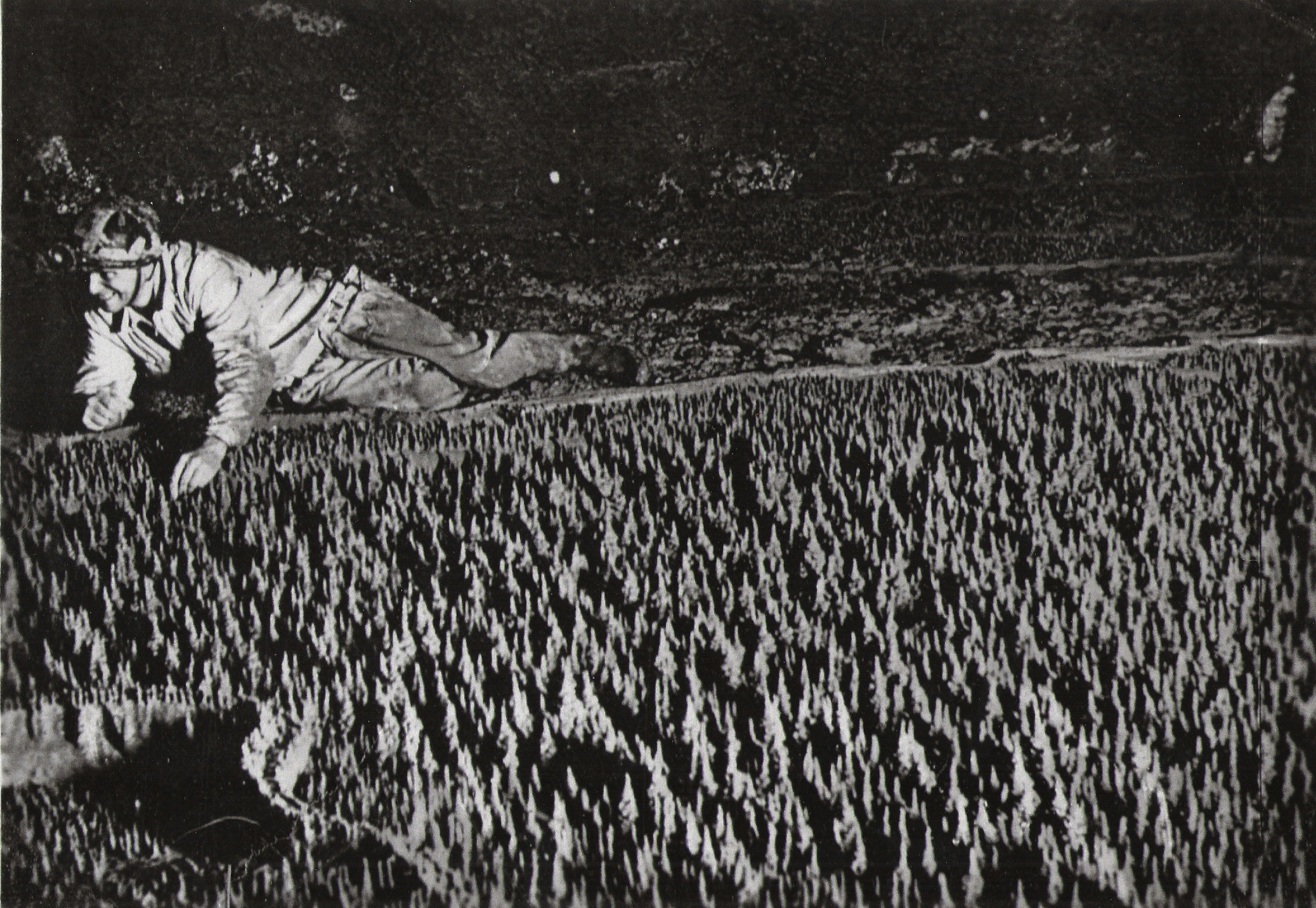Timeline
The Cave of Trabuc has been known since ancient times. E. Dumas reported discovering prehistoric bones and tools proving that the cave had been occupied since Prehistoric times and until Roman times. The occupation of the cave can be easily explained: the natural entrance is low and narrow, inside we can find the presence of a large room, easily defendable, and with several hiding places. These conditions were therefore favorable for habitat.
At a later stage, in the Protestant Reformation period the cave was used as a refuge and as a gunpowder factory by the “Camisards”. The king’s troops blocked the entrance of every cave surrounding the area in order to eliminate these invulnerable hideouts.

Drilling of the tunnel in 1950

The trabucco, weapon of Trabucaïres
A century later, it is believed that the cave was used as a hiding spot for “Trabucaïres” (highwaymen). The name of the cave comes from this troubled time. The bandits carried the trabucco, a pistol with a wide mouth, a very dangerous and effective weapon when stuffed with powder and scrap. In local dialect they were nicknamed the “Trabucaïres” being the carriers and users of the trabucco.
These threatening explorers were succeeded by the first serious explorers, who entered the caves to decipher the secrets of the underground environment
In 1823, Nicod and Gallière organized a 3 day expedition into the caves and as a result they became justifiably the pioneers of underground camps. Gallière got lost and had to spend fifty-two hours in the dark before being found biting his shoelaces and drinking his own urine.
From that moment, the whole of what is known as the ancient Trabuc caves, were explored.

Passage of “Trou du Vent”

Discover of 100 000 soldats par G.Vaucher
In 1889, the entomologists V. Maget and G. Mignaud discovered a kind of niphargus named Bathyscia Mialetensis in honour of Mialet’s caves.
It was in 1899 that the Trabuc network was visited by the first speleologists. Mazauric, Martel’s collaborator, depicted the network in the French Speleological Society newsletter. In 1920 a map of the network of galleries and rooms was published in the “Spelunca” journal, the cave was already famous in the speleological circle, however the publication communicated the significance of the network for the wider public.
At that time , tourist visits of the caves were performed by entering through the natural entrance and the low passage of the “estrangladou” that led to the “ Salle des Vasques”. back then the visits were made with torches, and the guides lit bengal lights and sold them in exchange of a few coins. Even if the chambers ware so vast, the smoke would spread very rapidly and the group of visitors had to rapidly find their way out of the cave.
For the French national day (14 July), the visits to the cave were part of the festivities.
In 1945 began the era of new discoveries, thanks to the perseverance of M.G Vaucher and his sons Marc and Olivier. Through their work, more than 7 kilometers of network were explored.

Inauguration of the cave in 1952
Still today there are many underground networks to be discovered. Exploration in the roofs, cave diggings, passing in the sumps of lower systems!
The mysteries of Trabuc have not yet been discovered. Like in all major underground networks, surprises await for the more persistent explorers.







 Be informed of our actuality before everyone else!
Be informed of our actuality before everyone else!